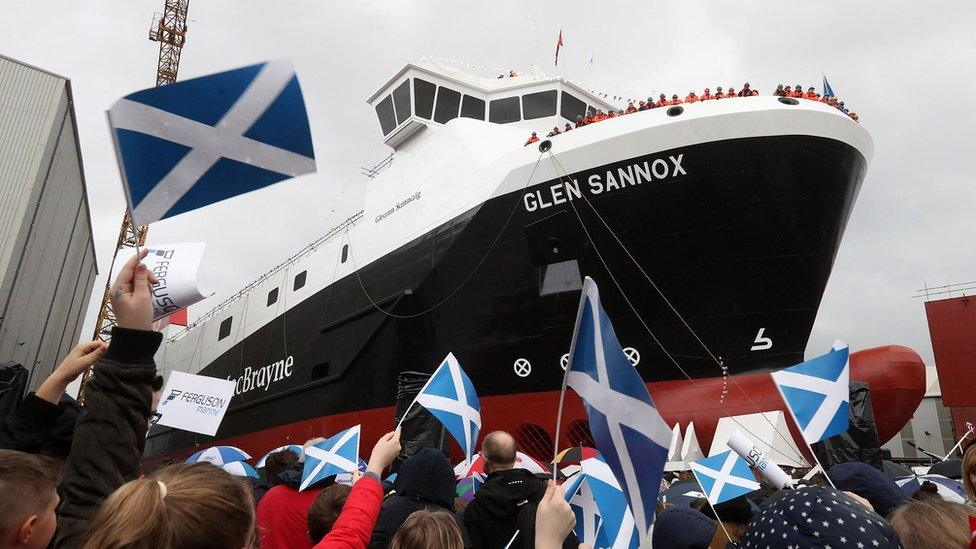Ferry fiasco: Holed and listing badly
- Published
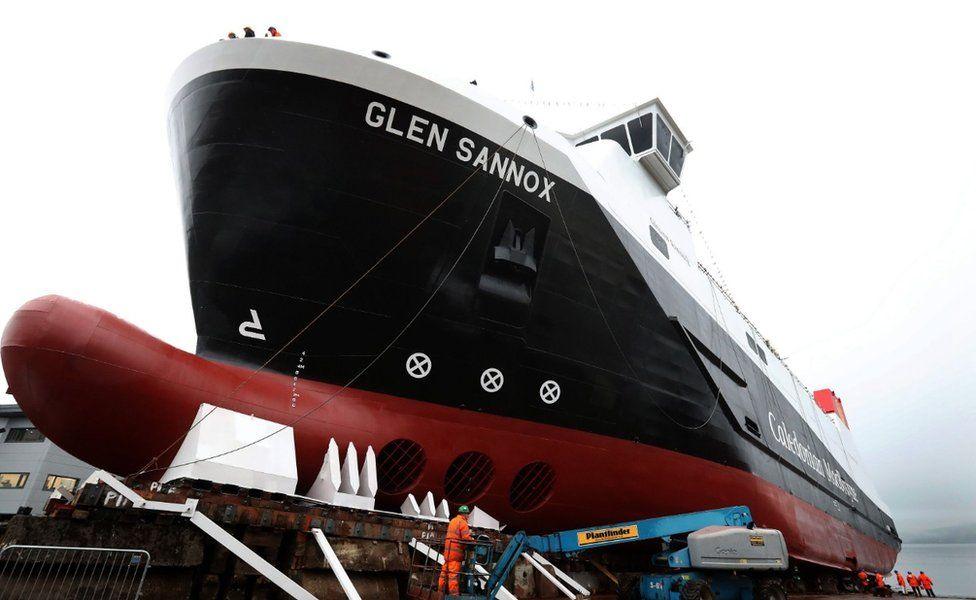
The MSPs' report into the "catastrophic" mismanagement of CalMac ferry building is hard-hitting, but it doesn't end the Ferguson ferry fiasco. Jim McColl, who used to own and run the shipyard, is back with a forceful counter-attack on those who blamed him.
He's looking for a public inquiry, and could take legal action. He continues to dispute the charge that his company was incapable of fulfilling the contract competently.
The Scottish government is standing by the three agencies it controls, which all face MSPs' criticism. It will review the way it buys ferries with a "stakeholder engagement strategy".
If it's a parliament building, a ship or an extension to your home, beware of changing the design once the work has begun - the cost will probably go up and it will be late. That was just one of the lessons from the fiasco that was the building of the Holyrood parliament.
Ten years later, that had not been learned when the Scottish government's agencies set about procuring new ferries for CalMac.
Holyrood was contracted on the basis that the procurer carried the risk of rising cost, and as the design kept changing, that was found to be the main reason the bill soared from £50m to more than £400m.
By contrast, Ferguson shipyard agreed to a fixed cost for the two ships of £97m. Yet that was not adequate protection from risk. Fixed cost turned out to be flexible.
A further £45m was added as a "loan". MSPs note the striking lack of transparency as to its purpose. Costs were rising. Then the former owner of the yard was put into administration by the Scottish government. That was followed by nationalisation. And in the process, the cost has more than doubled.
Jim McColl, the industrialist hailed by ministers as saviour of the shipyard in 2014 and then ousted from it last year, also by ministers, says the cost should now be put at £255m and rising steeply.
Industrial strategy
The Holyrood building project fired up a palpable anger across Scotland at the incompetence involved. In the current strange Covid-19 environment, it seems that neither the ferry contract nor the loss of £52m on the collapsed BiFab yards in Fife and Lewis seem to be having that impact.
On the same day MSPs on the Rural Economy and Connectivity committee publish their punchy and damning findings, external on the ferries contract, Scotland's finance secretary, Kate Forbes, is explaining how she is spending £8.2bn of extra funds from the Treasury which she had not expected to have when the financial year began.
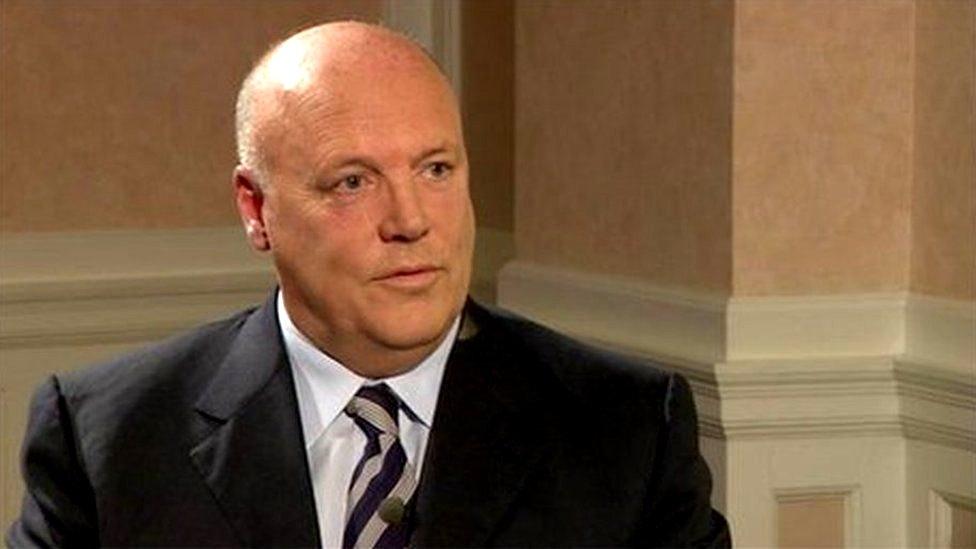
Engineering tycoon Jim McColl took over the running of the the shipyard in 2014 but was later removed by ministers
In that context, the Scottish government's expensive and inept efforts to support Scottish manufacturing seem relatively minor. Yet they blow a hole in anything that passes for industrial strategy.
Both involved the Scottish government brokering deals to bring in private sector operators, which they presented as the saving of ailing industrial sites. Both led to corporate failure, and a falling out between ministers and entrepreneurs.
In the case of the Canadians running DF Barnes, who are expected to lose control of BiFab with its administration this week, they are walking away quietly, feeling let down by the Scottish government. Accused of failing to invest, the government say that was never its role.
'Grossly misleading'
However, at Ferguson's in Port Glasgow, the parliamentary inquiry seems likely to be only a lull before a renewed storm. Jim McColl and his former management team have written a forceful counterblast to MSPs, against those who blamed the former shipyard operators for the Ferguson ferry fiasco.
The international engineering tycoon told me he's digesting the report, but is minded to call for an inquiry, with evidence under oath. And he's leaving open the option of legal action.
I asked about the practice - which astounded MSPs - of billing for work done, when the work was not in the design or within the sequence, simply in order to keep funds flowing.
Mr McColl answered that the first part of sequencing in shipbuilding should have been the propeller and stern block, but that design was not finalised, and so managers had to shift to other work.
He regrets that he did not stop altogether and await the final design, but says that the shipyard and workforce would have gone without any funding if he had.
The letter from former managers attacks evidence to the committee from ministers, describing it as "factually inaccurate and grossly misleading".
It counters the claims made by Tim Hair, brought in by the Scottish government to salvage the shipbuilding project after nationalisation, saying his description of what he found at that stage was "ill-informed, grossly misleading and unfairly slanted".
'Highly irregular'
The letter gives repeated examples of approval of the work being done under then operator Ferguson Marine Engineering Limited (FMEL), including the independent inspector put into the yard by Scottish ministers.
It also draws on whistleblower information from contacts still inside the yard, claiming there is still no final design specification for the ships and, in a year, the project has only progressed by around 10% of the total.
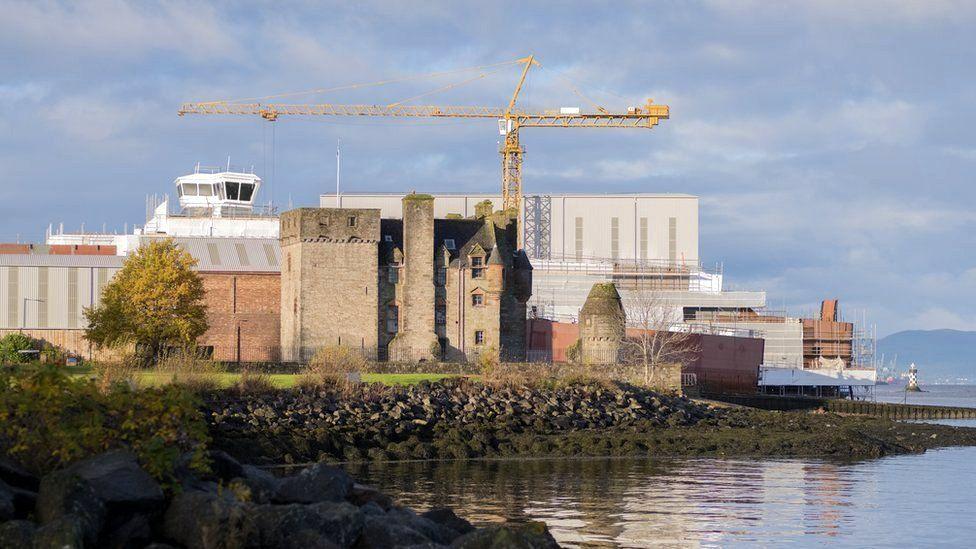
The Ferguson shipyard was awarded the ferry contract in 2015
The letter claims there is no final inventory of required equipment for finishing the ships, saying that is "highly irregular". And it says staffing is a problem, because the skilled workers required in Port Glasgow have more secure work in other Clyde and Rosyth shipyards.
It also goes on to list the opportunities lost when the Scottish government nationalised the yard last December. A leading research role in hydrogen-powered ships has been abandoned, along with a plan to develop an Inverclyde site to build fishing boats.
Blame game
And that is one of the stranger bits of Scottish government policy, having taken over the yards. The only intention is to finish the two ships which are now far behind schedule. Ferguson's does not seem to be seeking other work.
Perhaps it is being readied for the next 19 ships required to bring the ageing, costly and inefficient Cal-Mac fleet into the 21st Century. But that strategy is yet to be laid out, and no tender is expected until the middle of next year.
CMAL's response to the inquiry has been to refer back to its robust evidence to the committee. It puts the blame firmly on FMEL.
But even if FMEL was to blame, the management of the contract from CMAL's point of view is still strongly criticised. MSPs report the evidence they heard that CMAL could be abolished and its ferry procurement role taken into CalMac.
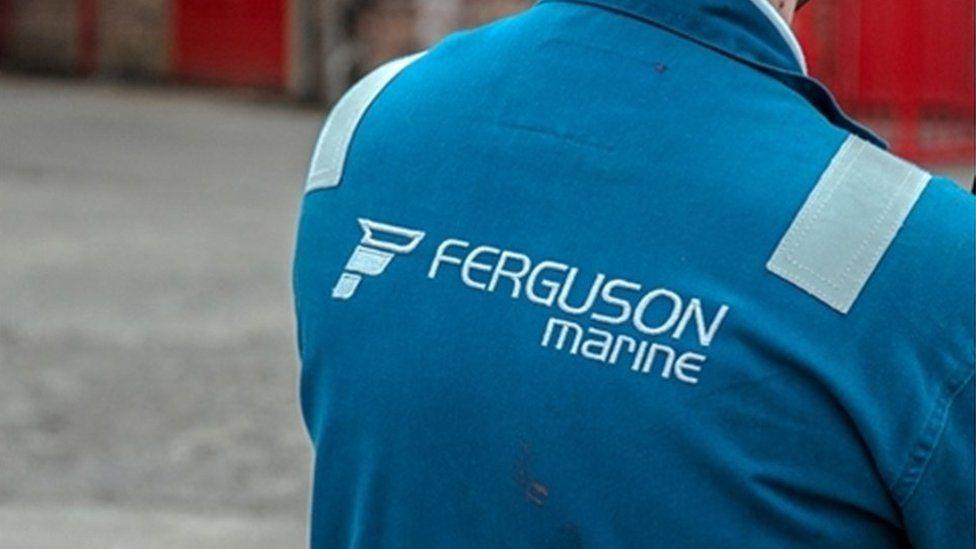
MSPs don't explicitly conclude that themselves, but they do suggest there may be too many agencies involved.
Reading between the lines of this report, the MSPs pass on the main and most astounding evidence they received, while choosing not to reach a judgement on which of the contradictory claims about capability and mismanagement were correct.
Their cross-party compromise was to blame everyone - except, it should be noted, the ferry operator itself, CalMac.
And with that, they are calling for a further inquiry, by Audit Scotland. And soon. Its auditors should better understand public procurement contracts, and the Auditor General is not constrained by politics.
Meanwhile, MSPs on the committee want a "root and branch review" of the way ferries are procured.
What Scottish government says in response reads like self-parody: an intention to publish a "ferry stakeholders engagement strategy".
This appears to mean that CMAL, Transport Scotland, CalMac and the Scottish government will try to communicate better.
That would be nice to have. Indeed, it's something that should be taken as read. This report suggests it's only the starting point for what's needed.
- Published9 December 2020
